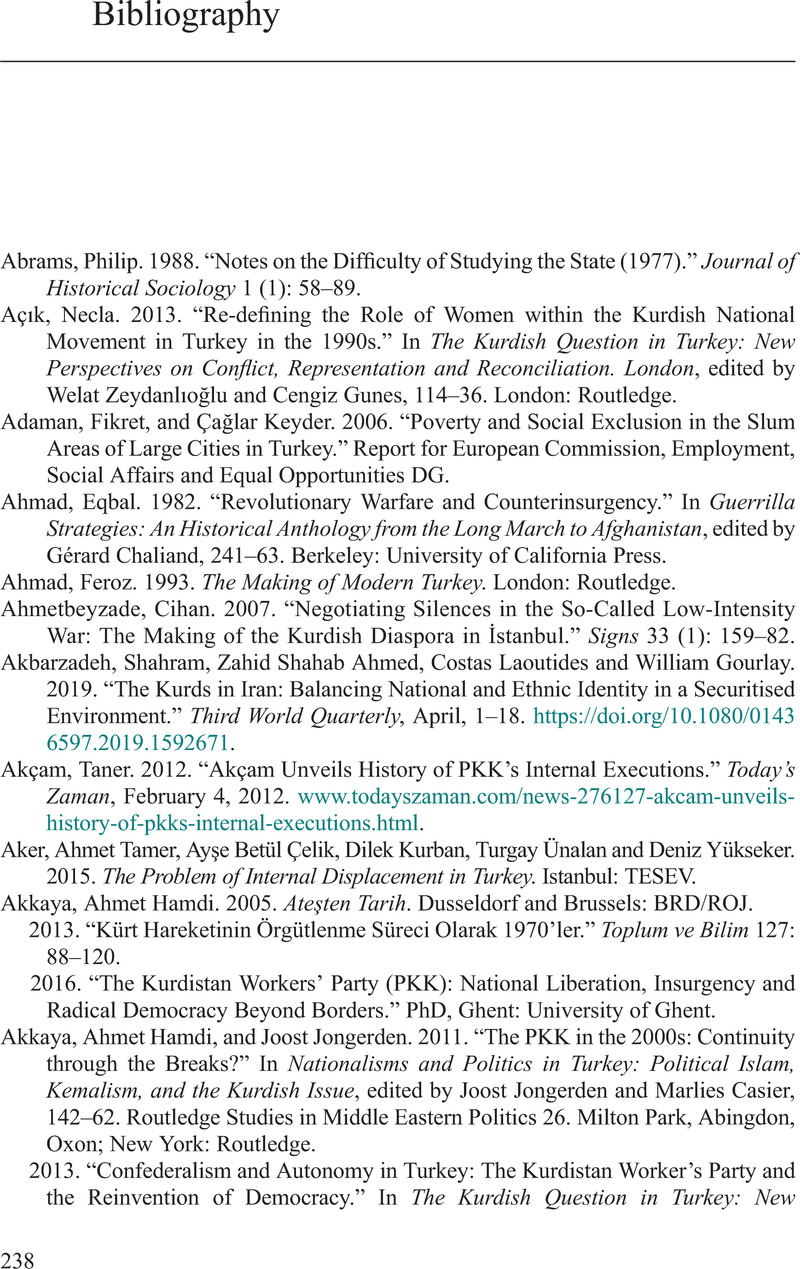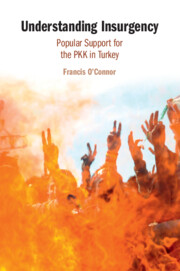Book contents
- Understanding Insurgency
- Understanding Insurgency
- Copyright page
- Dedication
- Contents
- Map
- Acknowledgements
- Abbreviations
- Introduction
- 1 Kurdistan in Twentieth-Century Turkey
- 2 Theories of Insurgent Support
- 3 PKK Pre-conflict Mobilisation (1974–1984)
- 4 The PKK and Rural Insurgency
- 5 PKK Insurgency and the City
- 6 The PKK in Western Turkey
- Conclusion
- Appendix: Interview Index
- Bibliography
- Index
- References
Bibliography
Published online by Cambridge University Press: 13 August 2021
- Understanding Insurgency
- Understanding Insurgency
- Copyright page
- Dedication
- Contents
- Map
- Acknowledgements
- Abbreviations
- Introduction
- 1 Kurdistan in Twentieth-Century Turkey
- 2 Theories of Insurgent Support
- 3 PKK Pre-conflict Mobilisation (1974–1984)
- 4 The PKK and Rural Insurgency
- 5 PKK Insurgency and the City
- 6 The PKK in Western Turkey
- Conclusion
- Appendix: Interview Index
- Bibliography
- Index
- References
Summary

- Type
- Chapter
- Information
- Understanding InsurgencyPopular Support for the PKK in Turkey, pp. 238 - 276Publisher: Cambridge University PressPrint publication year: 2021

